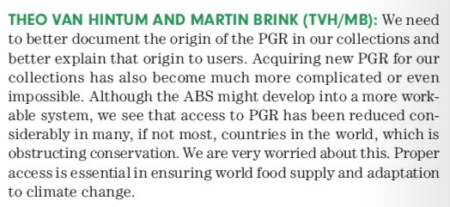The article “Seed longevity phenotyping: recommendations on research methodology,” by Fiona Hay and others, is now freely available online. Read the whole thing, and note the use of DOIs, if you’re thinking of phenotyping seedlots for longevity or storability. But here’s the bottom line, just to whet you appetite:
- Use ageing conditions that are appropriate to the potential downstream use of the findings. Ideally such conditions should be standardized to enable comparisons across studies and perhaps, species.
- Take enough samples for germination testing such that a survival curve can be fitted to the data and appropriate parameters determined.
- Specify if seeds were de- or adsorbing moisture; determine the MC of the seeds if they are placed in a controlled-RH environment (e.g. over a saturated salt solution).
In an earlier Brainfood I said it was behind a paywall, which I swear it was when I checked, but that’s not the case anymore, thank goodness.
